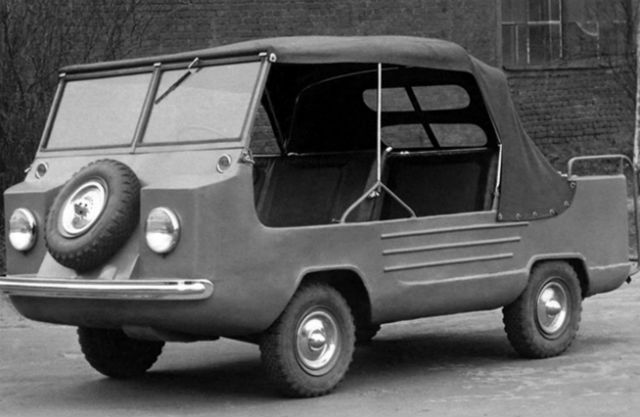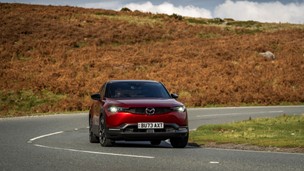During the Cold War era, the former USSR was responsible for creating some of the weirdest and most wonderful cars anywhere in the world.
Faced with a lack of technology and resources, and without large amounts of money to purchase cars or new innovations, the Soviets instead had to get creative with their vehicle-building techniques.
Some were built as utility vehicles, other as upscale motors to match those of the West, while others still were built for the race track or for purchase by the common comrade.
The one thing that connects them? Well, they’re all odd as hell for one thing…
1. ZIS-112
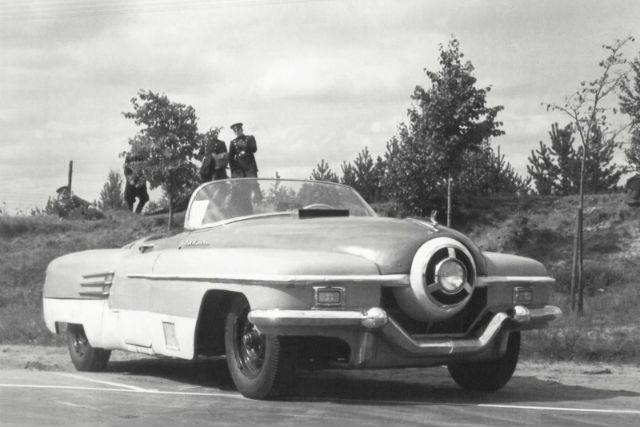
Built by Russian carmaker ZIS in 1951, the ZIS-112 was a concept car heavily inspired by the design of the 1951 GM LeSabre concept.
Clocking in at a lengthy six metres long, this stretched two-seater featured a removable hard top and originally came powered by the same 138bhp V8 engine as the earlier ZIS-110. Later, the car nicknamed ‘The Cyclops’ thanks to its distinctive front end got an experimental 183bhp V8 with four carburettors.
From 1955 onwards, the 112 was revised and its hefty 2,450kg weight dropped with the addition of new fibreglass bodywork so the car could be used in several national Russian racing championships.
2. NAMI-013

Sort of the a mid-1950s Soviet alternative to the Ford Galaxy, the NAMI-013 was a six-seater minivan prototype, though its looks were decidedly more futuristic than family-friendly.
However, despite its slightly strange appearance it featured some interesting tidbits like a rear-engine design and independent suspension for each of its four wheels. It also had a two-speed gearbox, so there’s that…
3. GAZ-16
It looks like something plucked straight from a scene in The Jetsons, and the experimental GAZ-16 certainly wouldn’t look out of place in Orbit City.
Manufactured by GAZ, there’s very little known about the vehicle other than it was built in 1962 as a prototype hover car.
Following on from the earlier NAMI AVP, archive footage shows the GAZ-16 in action. Powered by twin fans at the rear, it didn’t fly, but rather skimmed across the ground much like a traditional hovercraft.
4. Moskvitch G2
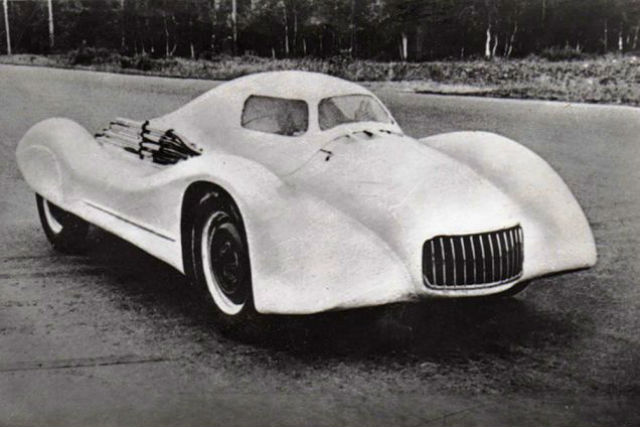
A dynamic-looking sports car concept, only two Moskvitch G2 models were built, following on from the earlier G1 racing car.
Built in 1956, the G2 was powered by a mid-mounted 69bhp inline-four flathead engine, with brakes, suspension and wheels all borrowed from the compact four-door Moskvitch 401 family car.
Despite being something of a hybrid, the G2 could reach a top speed of 139mph and set three Soviet speed records in long-distance racing. However, by 1960 it was no longer used and both of the two models which had been built were dismantled for spare parts.
5. VAZ-1801
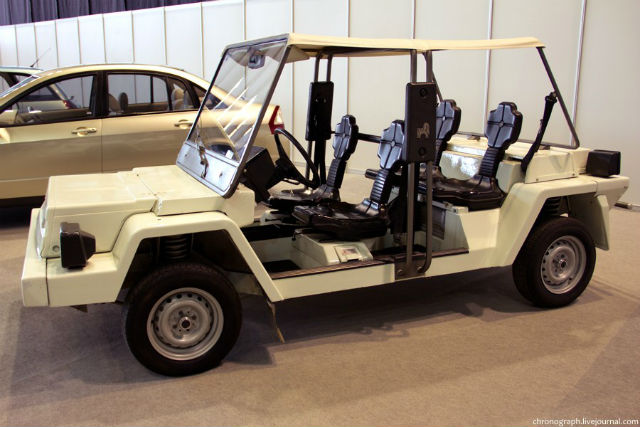
Something of an exercise in bare bones design, the VAZ-1801 was created specifically for the Moscow Olympics in 1980, where it served as a buggy to ferry people around the stadiums.
Powered by two nickel-zinc batteries, this electric buggy might have looked slightly skeletal but actually had a pretty impressive range of up to 70 miles on a single charge.
However given that its batteries weighed a pretty hefty 180kg each, top speed was limited to a fairly weedy 25mph. Still, not bad for what was essentially a glorified golf cart.
6. GAZ-24-95
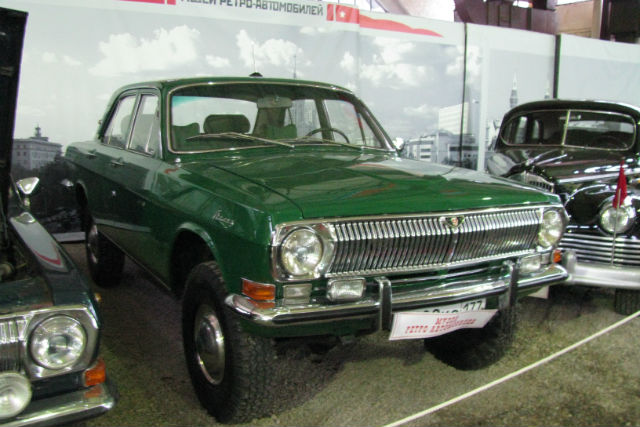
It’s possible that the GAZ-24-95 was one of the world’s first crossover vehicles, built nearly 40 years before the crossover as a format would catch on.
Based on the GAZ-24 Volga, the 24-95 was a four-wheel drive version designed for off-roading, which came with stronger suspension and frame rails to carry the greater weight.
The front axle ended up being a rear axle ripped from the Volga and turned backwards, while the changes overall added a significant 90kg to the car’s weight.
Only five were built and it’s believed that only two of these cars survive, one in the GAZ museum and the other in the hands of a private collector.
7. Moskvich 408 Tourist
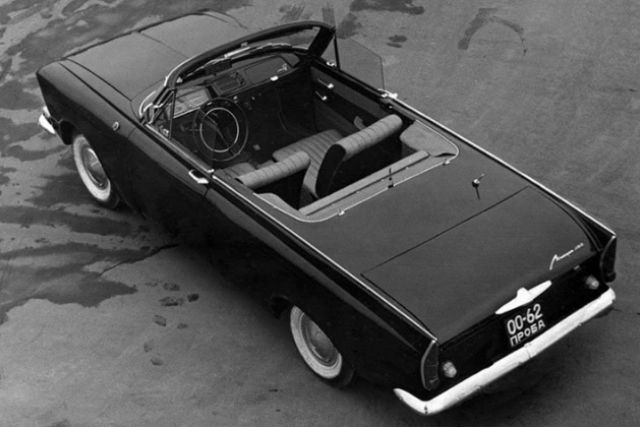
Built in 1964, the Moskvich 408 Tourist was designed to be a luxurious drop-top cabriolet, with a top speed of 80mph.
Although it was based on the Moskvich 408, the body was almost entirely new, while the engine was tuned up to 62bhp and featured a then-experimental electronic fuel injection system.
Unfortunately, thanks to the Communist regime’s hang-ups about such luxuries, drivers in the USSR weren’t allowed to buy one. Ideas to export the 408 Tourist to foreign markets were shot down fairly quickly, as the Moskvich wasn’t able to pass the safety tests necessary for the European market.
8. ZIS-101A Sport
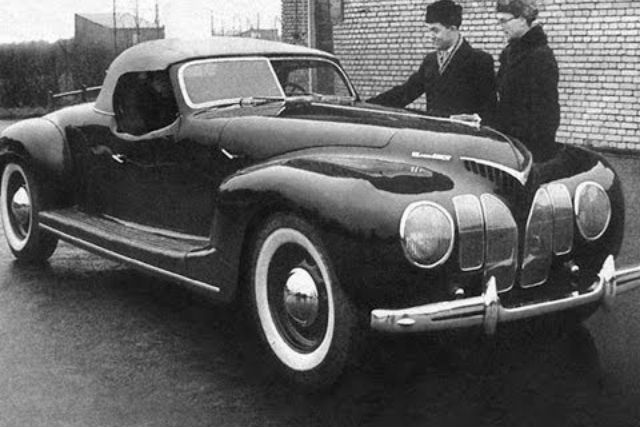
In 1939, the Soviet motor racing scene was still in its infancy, and although car manufacturers had some experience building sports cars, the idea of using lightweight body parts still hadn’t been discovered.
As a result, the ZIS 101A Sport, built as an “athletic limo” and personally approved by Stalin himself, was far too heavy for its engine and could hardly gain speed at all.
Despite the efforts of several young designers, the 101A Sport never managed to achieve what it set out to do, but ultimately it was the advent of World War II which put a permanent end to the project.
9. NAMI-A50 Belka
Designed as a compact five-seater with a 746cc two-cylinder motorcycle engine that produced 20bhp, the A50 Belka could reach a top speed of a pretty lame 47mph, but it wasn’t all bad.
Although it never went into full production, the car’s name was taken from the Russian word for “squirrel”, and you have to admit that the resemblance is pretty uncanny.
10. GAZ-A-Aero
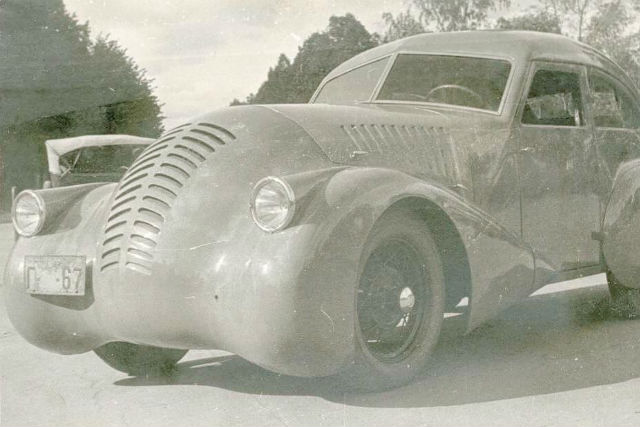
An early Soviet experiment with aerodynamics, the GAZ-A-Aero was built in 1934 and produced by engineer Aleksei Osipovich.
Based on the GAZ-A model, it used a wooden body construction covered in metal plates, with the standard GAZ-A engine upgraded with aluminium cylinder heads and an increased compression ratio.
Only one car was ever built, and despite its attempts to experiment with lightweighting it was still no match for other sports cars of its time.
11. ZIL-2906
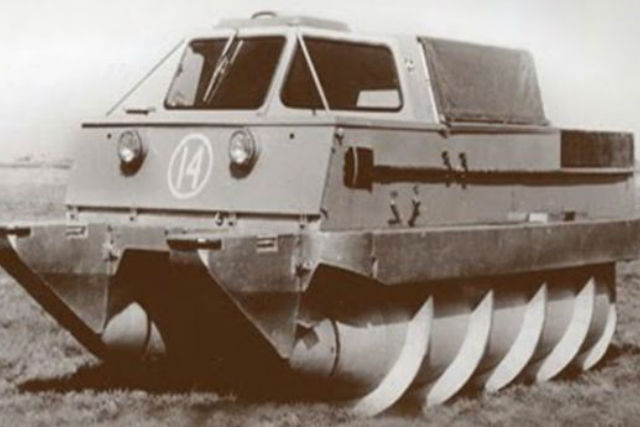
Likely among the wackiest-looking vehicles in history, the ZIL-2906 was actually built especially to retrieve cosmonauts who had landed in areas otherwise inaccessible to any other vehicle.
Propelled by the twin screws underneath it, the ZIL-2906 was able to navigate areas that helicopters couldn’t land and regular trucks couldn’t drive, including swamps, mud and even water.
On regular ground, it could travel at speeds of up to 50mph, while it could reach up to 12mph in swampy conditions, 9.9mph on water and up to 28mph on snow.
12. NAMI-031
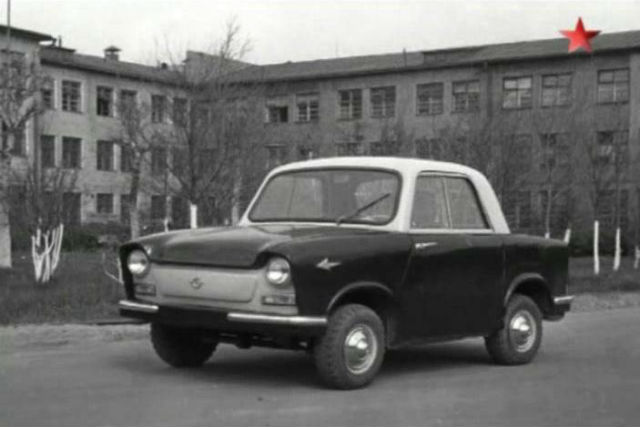
An attempt to produce a cost-effective micro-car for the working class, the elderly and the disabled, the NAMI-031 was built in 1957 and powered by a 500cc motorcycle engine.
Peak power clocked in at a fairly amusing 18bhp, but despite the promising and progressive ideas behind it, the 031 never made it into production and instead remained as an experimental concept model.
13. VAZ-2103
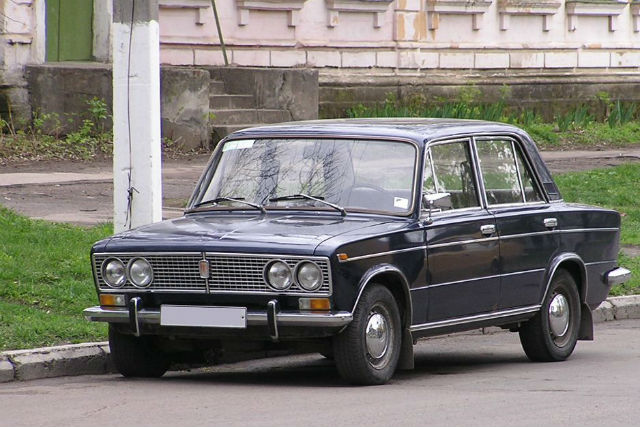
Despite a somewhat shaky relationship between the Germans and the USSR, in 1975 Porsche chairman Ernst Furhmann met with Soviet automotive industry minister Viktor Polyakov.
The two struck a deal where Porsche would help design Lada cars, and the VAZ-2103 was the stillborn result of that partnership. Porsche redesigned the car and reworked its suspension, interior and its appearance, though suffice to say it was no 911.
In the end, the Soviets rejected Porsche’s redesigns and instead decided to rework the car themselves, designating the update the VAZ-2106.
